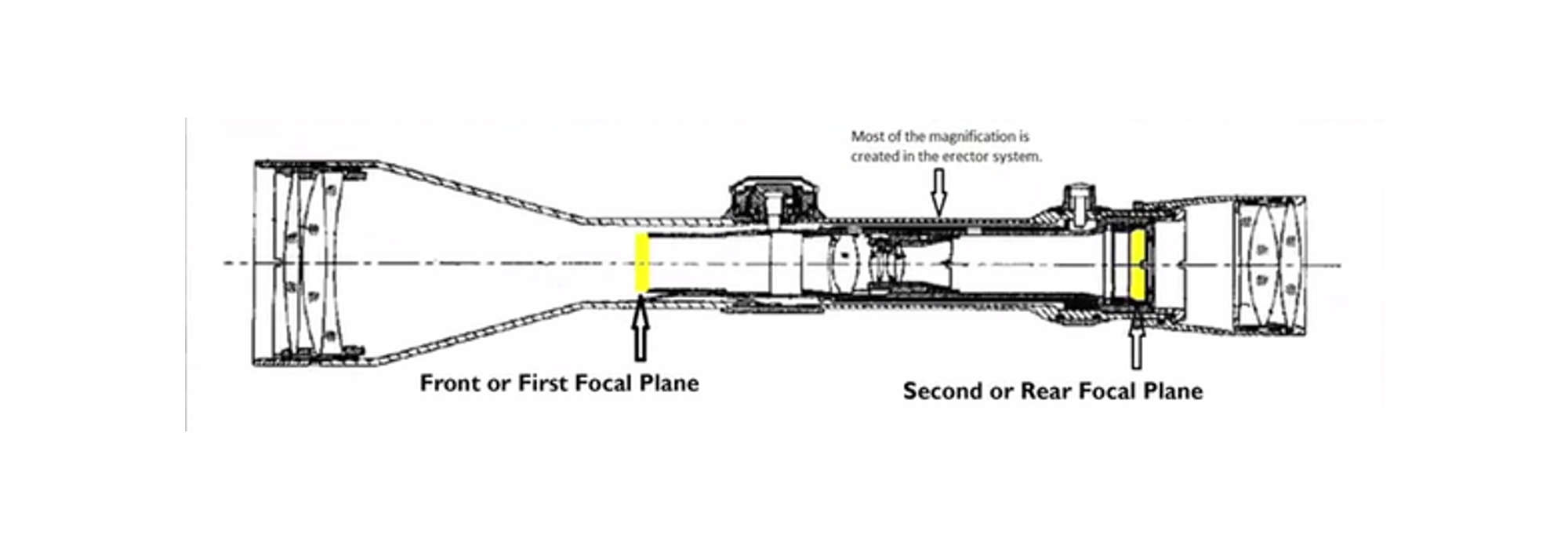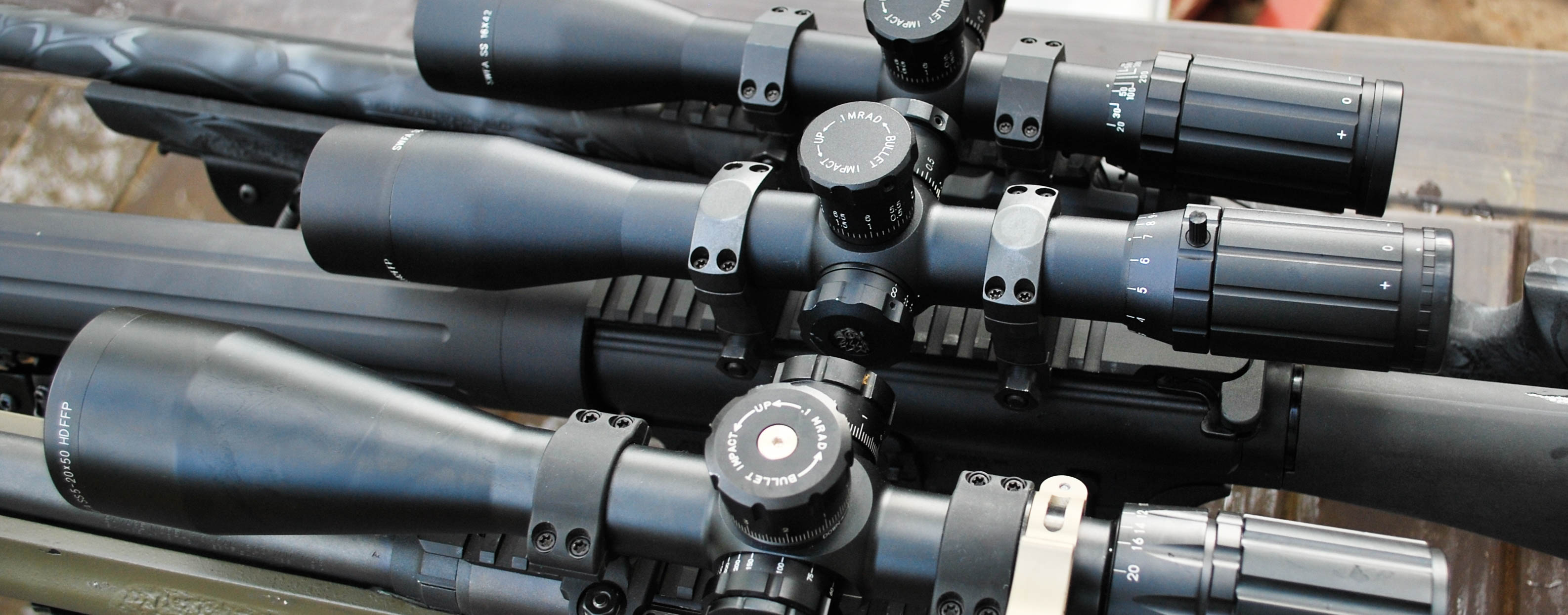Long Range 101: How To Choose The Right Scope
Choosing an optic to put on your rifle can be one of the most frustrating experiences new shooters go through. There are about a million choices on the market and most shooters really do not know whether they have a good or a bad one. In the end, you will see a lot of shooters justifying a scope they own based almost solely on price and not the utility of purpose.
Luckily, the SOFLETE team has the remedy. Below we are going to lay out the common anatomy of an optic, what drives price, what is actually affecting your decision and what should be affecting your decision. We’ll also cover how sometimes none of that matters.
Front Focal x Rear Focal Plane
If you have ever been on a firing line, you have no doubt heard about FFP - or front focal plane - optics and RFP - or rear focal plane - optics. Both are common in competition, hunting and the military. Wondering why you should buy an FFP or an RFP optic is also one of the most common questions in the shooting community. So, which one is better? The answer is neither; It comes down to application.

Shooting Application: If you are planning on utilizing windage and elevation hold off, an FFP optic is a great tool to have because the subtensions of the reticle are true throughout all magnification ranges. That is important in combat and competition due to rapid and complex engagements. Not having to add in the extra step of dialing as well as being on a more neutral magnification will increase your field of view, ultimately increasing your speed on targets and follow-on shots.
Caveat: You will occasionally hear the sniper or competitive shooter say they need it for range estimation. That’s not a reason because most of the time you will be on full magnification trying to squeeze out every bit of reticle line you can.
Terrain Application: Terrain is something I don’t really hear people talk about. But for the hunter and professional sniper, terrain should play a key role in deciding what type of optic you choose. For the professional sniper, knowing the area and terrain you operate in is key.
If you are part of an urban department, an FFP optic may not be the best choice due to how small the reticle gets when you are backed down on magnification, making it almost unusable, especially in low light. The average LEO Sniper engagement is somewhere around seventy yards, so windage and elevation hold off are not an issue. Most LEO snipers can get away with a second focal plane 1-8 or 2-10 optic and never have a problem.
The same goes for hunting. Here in the Cascade range of Oregon, we have triple-canopy forest, which makes having a second focal plane optic key, as we can be on a low magnification and still have defined reticle to use if we have to snap on target.
If you are in open country or mountainous environments, FFP optics will be a key to victory because the engagement distances are longer and you’re having to contend with increased gravity drop, multiple layers of wind and degradation of velocity. All of those compound to decrease the percentage of a first round impact. Having to be on max magnification for hold off or having to come off glass to dial the correction closes the eye box and complicates the follow-on shot once again increasing the chance of missing.
Considerations
Objective lens size: Perhaps the biggest misconception in the shooting world is that lens size equals light transmission. The easiest way to explain how completely ridiculous this thought is is to think of an optic like funnel whose neck is one inch and whose cone is thirty inches. Regardless of how much is in the cone, only one inch of neck is allowing passage.
The objective lens does however, afford a higher potential for optical resolution. While your ability to have tack-sharp clarity is far more limited by the quality of the glass, basic optical theory holds that a larger aperture for light directly corresponds to lower diffraction thus, higher resolution. The main tube size also sets a limit on resolution, but starting with a larger objective lens gets you off on the right foot.
So what does affect light transmission? It's a compilation of few different things, none of which being the size of the objective lens.
First, you will want to make sure the manufacturer is using the best possible glass they can. You will also want to pay attention to the total number of lenses in your optic. Each time light passes through the material of the lens it is degraded by a certain amount. If an optic has a total of six lenses, it degrades that amount multiplied by a factor of six. Coatings and glare management also play a key role in the amount total usable light that hits your eye but it is above the scope of this article. Further training on that can be found in the links at the end of this article.
Main tube diameter: After reading the above paragraph it would be easy to surmise that a 30mm main tube will have more light than a one-inch main tube. Of course, you’d be wrong. But what about the funnel, man? It doesn’t matter the way the objective lens size does. The only reason you should be worried about main tube diameter is if you need more usable adjustment (clicks on the turret for you new guys) or want a side focus element. That’s it, myth busted!
Weight of optic: How many times have you heard some expert say “this thing is built like a tank?”
It’s no secret that consumers often value something heavy in the hand over something lightweight. We equate weight to durability and strength, thus lighter-weight objects feel like they will break more readily.
But let me introduce you to Newton’s Second Law of Motion which states, more or less, that the heavier an object is, the more net force that object has. Why this should matter is because every time you fire your rifle with that tank of a scope on it, the net force and acceleration are felt more by the internal parts. That doesn’t mean that all lightweight scopes are durable, cheap is cheap but with modern manufacturing, we can make very durable lightweight optics.

Accoutrements
These aren’t just for sandwiches. Below are some simple extras that are must haves for some and nice to haves for others.
Locking adjustments: For a simple system, a lot of optics manufacturers overly complicate the locking adjustment. It can go from a great feature to a scene from Indiana Jones real quick. We use something called a zero lock it’s a very simple and easy mechanism that has a push button.
Throw levers: These are becoming a common feature that I really appreciate. They are affixed to the magnification ring and ease the process of rapidly changing magnification. This is especially key when your hands are freezing cold and fine motor skills start becoming a real task.
Side-focus adjustments: These are key when shooting long range. They act in two functions. The first being image focus, which, rather than focusing the reticle, focuses the actual image you are magnifying. The second is a parallax adjustment. If you have been following these articles, you know that parallax is when your reticle and target image are on separate focal planes. Being able to bring those images together and engage it parallax free will heighten the percentage of a first-round impact.
Cost: Like most things, the more feature-rich a product the more expensive it can be. Each time you add a feature, it adds cost. This is due to amount and type of material used, complexity of manufacturing and consumer demand.
If you cannot afford the optic you want there are two options, save or settle. I am a fan a saving because, like all cravings, when I want something nothing will do but that thing. If you are a settler, do not settle off of impulse. Write down must-haves and can live withouts. And don’t think you need something brand new. Used optics are a great option for any shooter.
Purchase Influencing: Humans by nature are social creatures, all existing in a tribe of some sort. Each tribe comes with its own prejudgments and idiosyncrasies and each community and individual has a value pyramid.
The fundamental elements that make up a value pyramid are Functionality, Emotional impact, Life-Changing Ability and Social Impact, with each of us weighing our buying choices with a mix of every category.
In the shooting space, buying choices tend to be influenced by whoever’s pyramid has the most likes on Instagram. Every community of species has the “influencer” who drives what is cool and acceptable within the peer group. A lot of new shooters will defer to this “influencer” when it comes to choosing an optic. Which is fine, pending they are passing good information and not some bullshit they read on (insert tactical forum name here). A lot of these people are amazing at looking like they know what’s going on but before they answer your DM, they are texting their own influencer. The ones with integrity will give an opinion and let you know that they are not the expert, while the other will fake it until they get found out. Question everything and do your own research.
Everything you just read doesn’t matter
Here is the deal, right now I’m sitting on an airplane on my way to a convention to discuss optics with shooters just like you. I am considered by some an expert on the subject matter. But if you think something is rad and you want that shit, fuck me and my opinion!
Do what’s going to make you happy and feel cool. If that means buying an optic that you want rather than the exact one you need than do it. It’s good to feel good. The process of buying an optic doesn’t need to be as complicated as buying a house and not everything you do needs to have several levels of analysis behind it.
Deep dive: I hope after reading this it has clarified some myths and magic for you. I also hope it’s motivated you to get off the computer and get on the range. I really appreciate when authors provide links for deep dives or further reading. So below you will find links to the dudes I defer to when you slide into my DMs.
The Leupold Optics Academy (shameless plug) is by far the most comprehensive course you can take if you are interested in optics theory and marksmanship. The Director of training Michael Baccellieri has spent his adult life (he’s old enough for it to be impressive) training and perfecting his craft. They are a full service shooting academy.
Kalinsky Consulting's Caylen Wojcik is considered by most to be the SME in precision rifle application. Do some Googling and you will quickly find out they’re not wrong. Much like the above, it’s a one-stop shop for optics and shooting.
DIE LIVING





